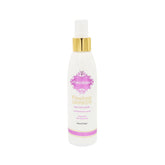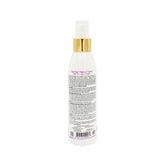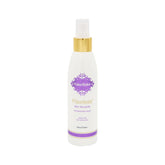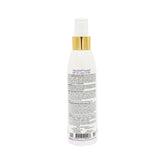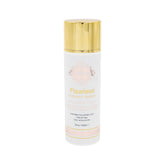SPF/UPF Sun Protection

Self-tanning products may give your skin a gorgeous glow, but they don’t protect your skin from the sun. Even with an ultra-dark, ultra-deep Fake Bake tan, your skin is still vulnerable to harmful UV rays. The solution is to make sure your skin is adequately protected, which you can do with the right sunscreen, clothing and additional tips.
What to Look for in a Sunscreen
Sunscreens are classified by SPF, which stands for Sun Protection Factor. SPF is based on the amount of time it takes for UV-exposed skin to turn red. If your skin tends to burn after 30 minutes, a sunscreen with an SPF of 10 is meant to protect your skin 10 times longer, or 300 minutes.
That doesn’t mean, however, you can leave it on for 300 minutes and forget about it. Even the highest-rated SPF sunscreens need to be re-applied every two hours to be effective. SPF 10 is pretty low on the scale, anyway. You can find sunscreens with an SPF 100 or more.
The recommended rating for a sunscreen is SPF 30 or higher, but that’s not the only thing to look for in a sunscreen. You also want to choose one that is water-resistant and offers broad-spectrum protection.
Broad-spectrum protection means the product protects against both types of harmful UV rays.
UVA rays: Also known as aging rays, these rays tend to cause wrinkles, age spots and otherwise prematurely age your skin. These sneaky rays even travel through window glass.
UVB rays: Known as burning rays, UVB rays are the ones that burn your skin. They are blocked by window glass.
Both types of rays are harmful to the skin, and both are known to cause skin cancer.
When and How to Use Sunscreen
You already know you need sunscreen in the summer when you’re heading to the beach, but that’s not the only time you’ll want it. Sunscreen is essential anytime you head outside, no matter what time of year it is. In fact, snow is great at reflecting damaging UV rays, increasing the chance of sunburn. Cloudy days don’t give you much cover, either, as up to 80% of the harmful rays can still get through.
The reason we’re bringing up how to use sunscreen is because most people don’t use enough of it. If you’re like most, you’re probably using less than half, or even less than one-quarter, of the recommended amount. Most folks also tend to forget about applying sunscreen to certain areas, like their necks, ears, tops of the feet and top of the head.
For adequate protection, you need to cover all exposed skin. The average adult needs at least 1 ounce of sunscreen, or enough to fill the typical shot glass. Remember that next time you’re squeezing the sunscreen into your hand.
Don’t wait until you’re out baking in the sun to apply it, either. Slather sunscreen on dry skin about 15 minutes before heading outdoors. Reapply after sweating, swimming or two hours, whichever comes first.

What to Look for in UPF Clothing
Quality clothing designed for sun protection is rated by its UPF, which stands for Ultraviolet Protection Factor. Such clothing is meant to protect against both types of harmful UV rays: UVA and UVB. The higher the UPF rating of a garment, the better sun protection it provides. UPF ratings start at 15 and go up from there.
Good: 15 to 20 UPF
Very good: 25 to 35 UPF
Excellent: 40 to 50 or more UPF
In addition to looking for a high UPF rating in clothing, you can also keep an eye out for additional characteristics that provide even more protection. These include:
Darker fabrics, which generally provide better protection than light colors
Denser weaves, which tend to protect better than looser weaves
Nylon and polyester, which typically outdo natural fibers for sun protection
More Ways to Protect Your Skin
While SPF 30 sunscreen and UPF clothing can go a long way toward protecting your skin, there are a few more steps you can take to help keep wrinkles, sunburn and skin cancer at bay.
Stay in the shade: Seeking out shady spots can provide even more protection, especially between 10 a.m. and 2 p.m.
Wear sunglasses and a wide-brimmed hat: The combination offers extra protection for your head and face.
Be extra careful around certain elements: Remember how snow reflects damaging UV rays and increases your chance of sunburn? The same thing happens around sand and water.
Give yourself regular skin checks: Become familiar with your skin so you can easily notice any changes. These could include bleeding, itching or irritable areas. Get those areas checked out by a dermatologist.
Practice safe tanning: Tanning safety starts by staying away from ultraviolet light, which comes from the sun as well as tanning beds. Self-tanning products are the way to go; just don’t forget to wear sunscreen.
With the right sunscreen, clothing and additional precautions, you can keep your skin protected and healthy for the long haul. You can keep it beautifully bronzed, as well, without spending even a millisecond in the sun. All you need is the right self-tanning product from Fake Bake. Find your favorite today.

